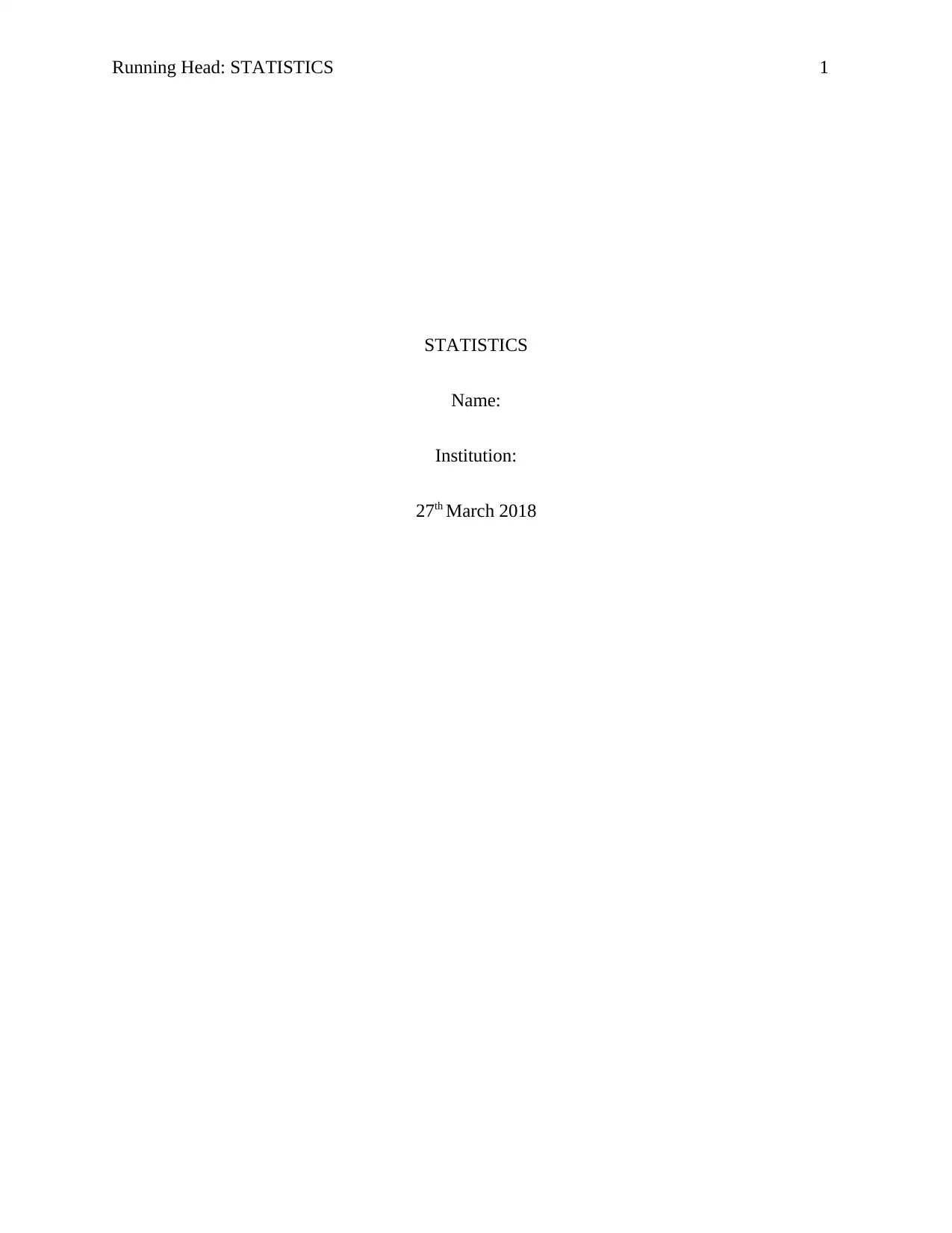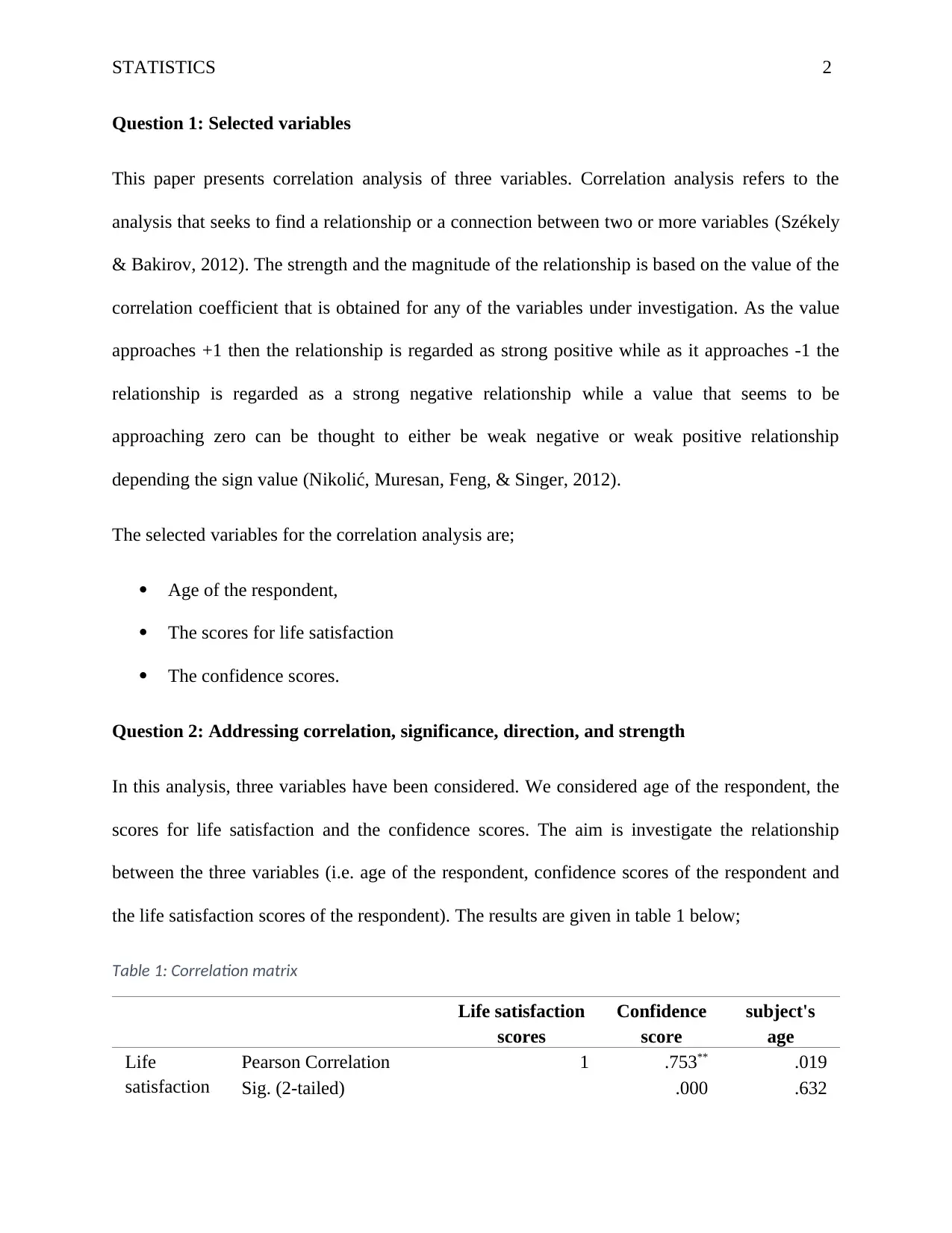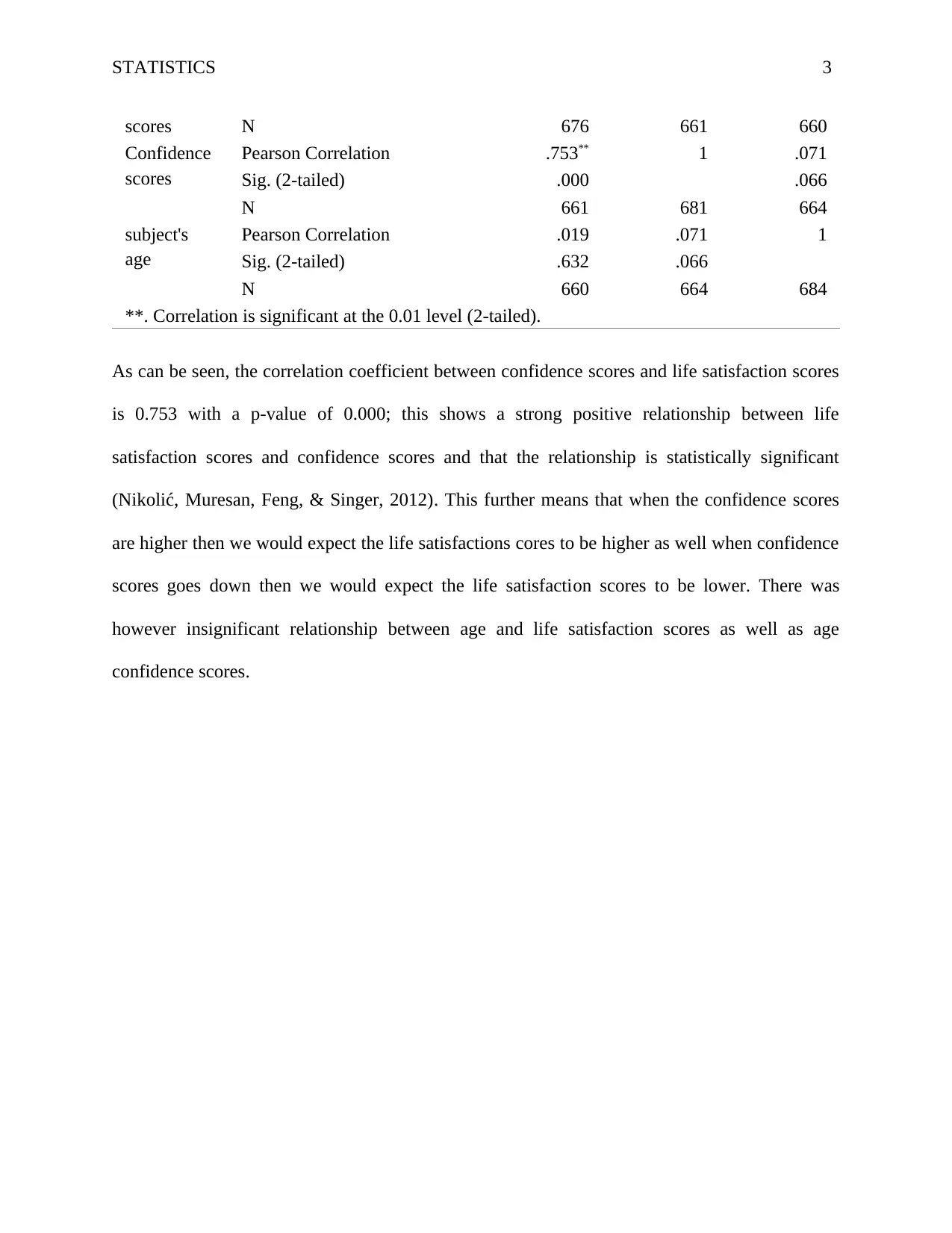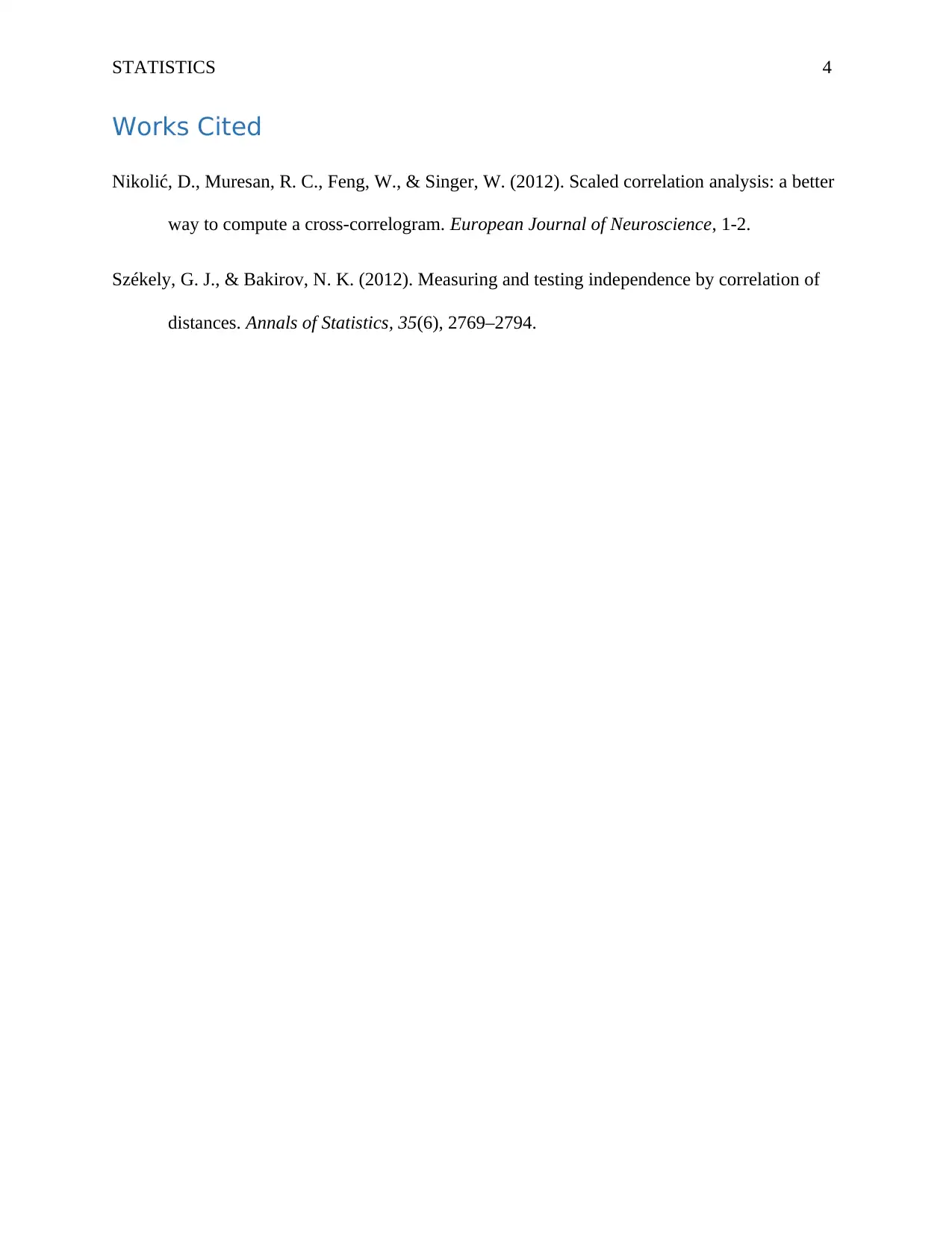Correlation Analysis of Life Satisfaction and Confidence Scores
VerifiedAdded on 2021/04/20
|4
|526
|276
Report
AI Summary
This report presents a correlation analysis of three variables: age, life satisfaction scores, and confidence scores. The analysis utilizes Pearson correlation to determine the strength and direction of relationships between the variables. The findings indicate a strong positive correlation between confidence scores and life satisfaction scores, with a statistically significant p-value of 0.000. This suggests that higher confidence scores are associated with higher life satisfaction scores, and vice versa. In contrast, the report reveals insignificant relationships between age and both life satisfaction and confidence scores. The report references the work of Nikolić et al. (2012) and Székely & Bakirov (2012) to support the methodology and interpretation of the correlation analysis. The report concludes by emphasizing the importance of understanding the relationships between variables and the implications of these relationships in various contexts.
1 out of 4







![[object Object]](/_next/static/media/star-bottom.7253800d.svg)